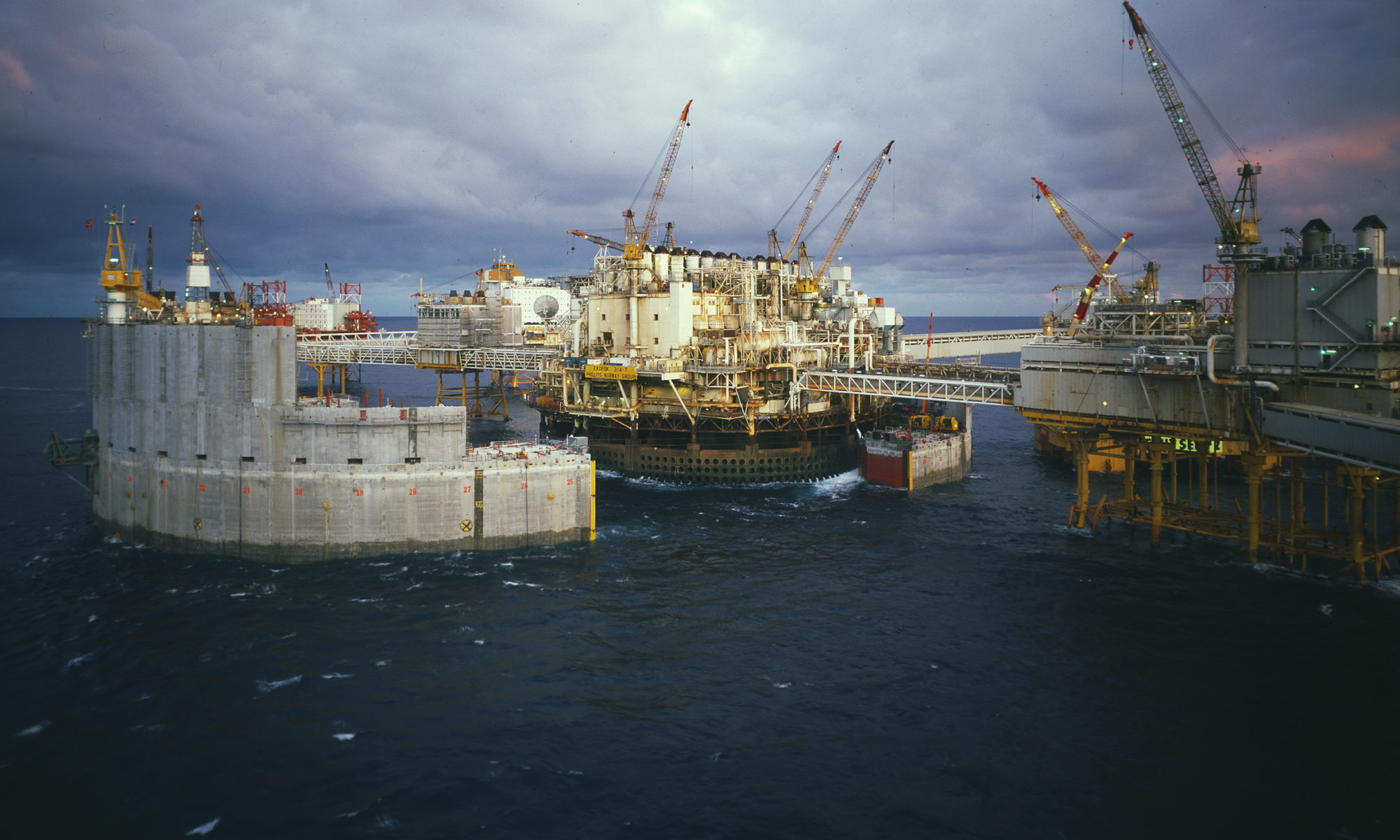Breakwater in place

With the western part positioned on 20 June, the 106-metre-high wall had been installed after a six-month construction period in the Ål Fjord.

Tow-out to the field had taken a week, with gales blowing in the final period. The project was completed in October at a final cost of NOK 3 billion.
The western section began its journey from the fjord on 11 June, with the eastern part following two days later. Conditions were ideal, with blue skies and calm weather.
Seventeen vessels were deployed in the towing fleet, including control and navigation units. This ranks as the biggest array ever mobilised to move structures off Norway.
The eight tugs required for each section had a combined capacity of about 180 000hp, and a total bollard pull exceeding 21 000 tonnes. The route measured 310 nautical miles.[REMOVE]Fotnote: Ekofisk, no 3, 1989.
Manoeuvring the western section over the mooring piles in the ”horseshoe” between Ekofisk 2/4 P, 2/4 H and 2/4 G was the first and perhaps the biggest challenge after arrival on the field.
The breakwater was ballasted down and manoeuvred under the bridge linking 2/4 G with the tank. Some of the tugs were attached to mooring chains which were anchored in turn to piles on the seabed.
Everything progressed without particular problems, and the section was ballasted down on 20 June from 65 to 69 metres.
Getting the eastern part in place provided the next critical phase. The winds had started getting up, and the operation was postponed. But calmer conditions prevailed by 22 June, and work could begin to pull the section towards the tank.
When the distance to the latter had narrowed to about 400 metres, winch cables were extended from the western half to the eastern, and the breakwater could be slowly but surely manoeuvred in over pipelines and under bridges until it was in position and touching the seabed on 24 June.
Positioning each of these 150 000-tonne concrete giants had been accomplished without problems. They were joined with steel ties and then with concrete – particularly difficult because it was done under water – to form a single structure.
Part of the completion work involved lifting on and installing 17 prefabricated breakwater components which had to be left off the towed sections so they could pass under the bridge. Each of these units weighed 250-300 tonnes.[REMOVE]Fotnote: PhillipsNytt, nos 10, 11 and 15, 1990.
When everything was finished, the tank – Ekofisk 2/4 T – was also protected against the 100-year wave.
New heliport at Sola airportTwentieth anniversary of Ekofisk discovery
